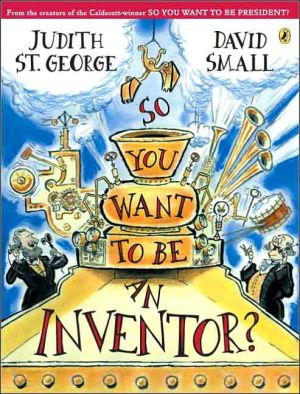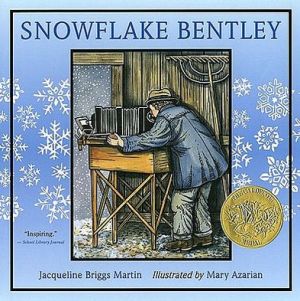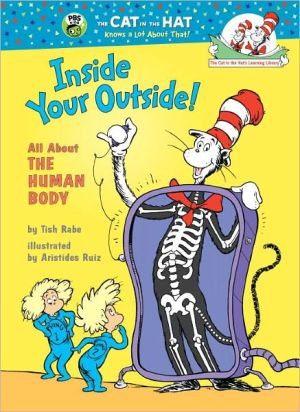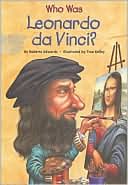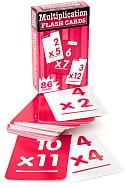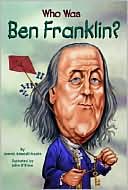So You Want to Be an Inventor?
St. George and Small, the Caldecott Medal-winning team who created So You Want to Be President?, are back with another spirited and witty look at history-this time focusing on the inventors and inventions who have given us lightbulbs, automobiles, and all the other things that keep the world humming.\ \ So You Want to Be an Inventor? features some of the world's best-known inventors-Thomas Edison, Benjamin Franklin, Eli Whitney-as well as lesser-known geniuses like Georges de Mestral...
Search in google:
St. George and Small, the Caldecott Medal-winning team who created So You Want to Be President?, are back with another spirited and witty look at history-this time focusing on the inventors and inventions who have given us lightbulbs, automobiles, and all the other things that keep the world humming. So You Want to Be an Inventor? features some of the world's best-known inventors-Thomas Edison, Benjamin Franklin, Eli Whitney-as well as lesser-known geniuses like Georges de Mestral (inventor of Velcro), Wilhelm Roentgen (inventor of X rays), and Hedy Lamarr (inventor of a system that became the basis for satellite communication-who knew?). Whether you're a dreamer or a loner, a copycat or a daredevil, this book might just inspire readers to invent something that could change the world!Publishers WeeklyWith a lighthearted style similar to the collaborators' Caldecott Medal-winning So You Want to Be President?, this volume furnishes brief sketches of inventors and inventions both famous and little-known. As she did in the earlier volume, St. George invites readers into her exclamation point-studded narrative and introduces many of the clever contraptions with snippets of advice: "If you want to be an inventor, be a dreamer" and "Don't worry if people laugh at you." The latter remark leads into mention of "Fulton's Folly," Robert Fulton's widely mocked steamboat: "But the laughter lost steam in 1807 when Robert's Clermont chugged up the Hudson River from New York to Albany with paddle wheels churning and flags waving." Some readers may miss the kinds of details that tantalizingly cluttered the pages in the previous volume (here, Alexander Graham Bell's invention gets one paragraph: "When he grew up, he dreamed of people talking across distances maybe by electric signals. Electric signals it was!", leaving Small with less fodder for his portraits). Still, she includes intriguing tidbits, such as the fact that glamorous actress Hedy Lamarr, who fled Austria before WWII, worked with a friend to invent a system for guiding torpedoes by radio signals ("Her goal? Beat Hitler!"). Humorous touches infuse Small's illustrations (for Franz Vester's invention of a coffin with an escape hatch, the artist shows a hand reaching out of the grave as guests depart the funeral); readers will particularly cotton to his caricatures of such luminaries as Benjamin Franklin and Thomas Jefferson. All ages. (Sept.) Copyright 2002 Cahners Business Information.
\ From Barnes & NobleThe Barnes & Noble Review\ The creative duo who invented Caldecott Medal winner So You Want to Be President? team up again for a lighthearted and illuminating look at history's greatest (and sometimes not-so-greatest) inventors. \ As with the earlier book, Judith St. George provides brief snippets of familiar and obscure history alongside David Small's hilarious, inspiring illustrations. If "you want to be an inventor," St. George explains in a whimsical spread that features Ben Franklin using his most famous creations, "you don't have to have white hair and wrinkles." The future statesman came up with the idea of "swim paddles for his hands and kick paddles for his feet" at the age of 12 (with much more to come later). It also helps to "be a dreamer" like Alexander Graham Bell (he relied on a "dreaming place" as a boy), and it's good to "keep your eyes open" like Clarence Birdseye, who invented frozen food after watching "Eskimos freeze fish on the ice." These are only the tip of St. George's innovators' iceberg, but the message is clear: "being an inventor means pushing the limits," even though "there will always be barriers to be broken."\ Equipped with all the bells and whistles St. George and Small fans could desire, So You Want to Be an Inventor? is winning fuel that will get brain motors revved up. St. George presents information in an informative and fun-to-read style, while Small's watercolor-and-ink paintings add appropriately wacky or serious angles to the historical perspective. Educators in particular will appreciate the biographical notes and bibliography, and parents will cherish the motivation for their kids. Young visionaries, get cracking! Matt Warner\ \ \ \ \ \ Publishers WeeklyWith a lighthearted style similar to the collaborators' Caldecott Medal-winning So You Want to Be President?, this volume furnishes brief sketches of inventors and inventions both famous and little-known. As she did in the earlier volume, St. George invites readers into her exclamation point-studded narrative and introduces many of the clever contraptions with snippets of advice: "If you want to be an inventor, be a dreamer" and "Don't worry if people laugh at you." The latter remark leads into mention of "Fulton's Folly," Robert Fulton's widely mocked steamboat: "But the laughter lost steam in 1807 when Robert's Clermont chugged up the Hudson River from New York to Albany with paddle wheels churning and flags waving." Some readers may miss the kinds of details that tantalizingly cluttered the pages in the previous volume (here, Alexander Graham Bell's invention gets one paragraph: "When he grew up, he dreamed of people talking across distances maybe by electric signals. Electric signals it was!", leaving Small with less fodder for his portraits). Still, she includes intriguing tidbits, such as the fact that glamorous actress Hedy Lamarr, who fled Austria before WWII, worked with a friend to invent a system for guiding torpedoes by radio signals ("Her goal? Beat Hitler!"). Humorous touches infuse Small's illustrations (for Franz Vester's invention of a coffin with an escape hatch, the artist shows a hand reaching out of the grave as guests depart the funeral); readers will particularly cotton to his caricatures of such luminaries as Benjamin Franklin and Thomas Jefferson. All ages. (Sept.) Copyright 2002 Cahners Business Information.\ \ \ School Library JournalGr 5-8-St. George and Small take a skewed, funny, and informative look at the history of inventions and their inventors and what it takes to become one. You don't need white hair and wrinkles, la the classic image of Ben Franklin. At 12, while still a rosy boy, he invented swim paddles for his hands and kick paddles for his feet. Being stubborn as a bulldog can help: Charles Goodyear spent 10 years messing about with raw rubber, bankrupting himself and going to debtor's prison, before he discovered the secret-sulfur-to making tires, tennis balls, etc. Elijah McCoy (the "real McCoy") invented an oil can that lubricated engines while still running and became not only an innovator but also an idiom. In brief sketches of nearly four dozen dreamers, from Henry Ford to Hedy Lamarr (who helped invent a system that became the basis for satellite communication), the message is simple: "There will always be barriers to be broken-. It takes passion and heart, but those barriers could be broken by you!" Small's lively, fluid caricatures make for a winning collaboration from the duo who brought us So You Want to Be President? (Philomel, 2000).-Dona Ratterree, New York City Public Schools Copyright 2002 Cahners Business Information.\ \
